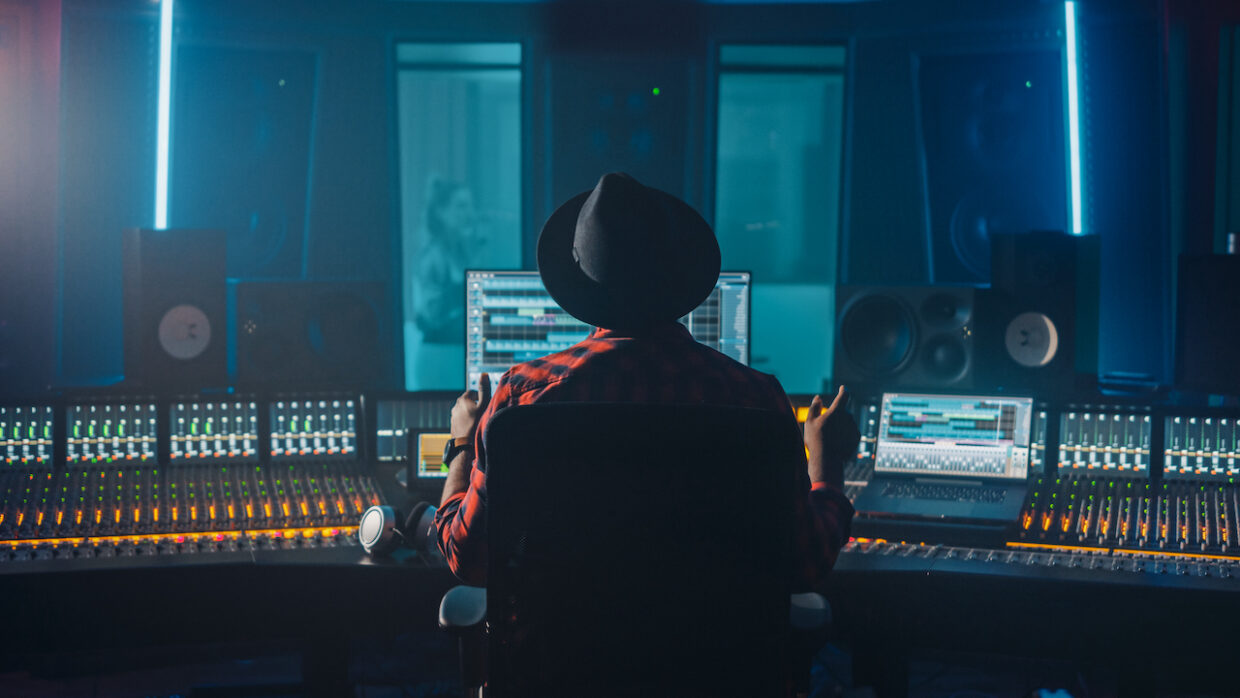This is Part Two of our series on how music NFTs are impacting the creator economy. If you missed Part One, check it out here.
Those of us working in the music industry know that one of the biggest pain points is tracking down music royalties owed to the artists and other collaborators who contribute to the creation of a song. The breakdown of music royalties and how they are paid out could be a stand-alone article, so we will keep it high level for now; but as a basic concept, it is pretty easy to understand that when a song gets played (e.g., on Spotify), the artist gets paid a certain amount.
The tricky part is, the artist is not the only person and/or organization responsible for the song’s creation. The artist performs the song when they record it, but a variety of people also contribute to the final recording. Someone also needs to produce the song, mix the song, promote the song, write the song, the list goes on (not to mention record labels, who typically take a percentage of the future royalties on an artist’s work in exchange for their services) — and all these people need to get compensated for their contribution.
Music royalty administration is carried out by organizations that aggregate and distribute the royalties to the people that own rights to the music. On the “master” side of the royalty (which is calculated based on monies earned from the final recording of the song itself), organizations like SoundExchange calculate and administer the royalties. On the publishing side, PROs (or “performance rights organizations”) do the same, but for songwriters credited as such on the record. If that’s confusing, think of it like this: the master royalties go to performers on the record, and the publishing side goes to the songwriters.
What does this all mean for an artist looking to mint an NFT of their song?
Whether signed to a label or independent, the artist typically retains ownership over a percentage of their rights to the music. In most record deals, payment to additional rights holders with respect to the recording come out of the artist’s share of the royalties, not the label’s. An artist signed to a deal with a label may not be able to grant rights to the overall song, but they are typically free to administer their own portion of the royalties via contractual assignment.
Some platforms have figured out ways for artists to capitalize on their administration rights with respect to their royalty percentage utilizing the blockchain. Working with artists directly, these platforms create technology which allows artists to mint NFTs and hold them for sale. Purchasers of these NFTs receive a contractual right to receive a percentage of the royalties
Ideally, this concept will inspire emerging artists to continue to expand direct connection with their communities by leveraging Web3 technology, ultimately allowing fans to impact the success of their favorite artists.

Owning NFTs that allocate a percentage of the royalties of someone’s favorite artist has expanded the connection between the artist and the fan. Image: Shutterstock
Financial Regulation:
Owning NFTs that allocate a percentage of the royalties of someone’s favorite artist or grant other additional benefits has expanded the connection between the artist and fan in a way that has never been done before, and NFTs are a great way for an artist to build and engage their community. However, operators and purchasers of NFT technology need to be aware of potential securities issues and other regulations when it comes to using blockchain technology and selling digital assets.
As laws around the financial regulation of NFTs and cryptocurrency continue to develop, companies in the space need to work diligently to ensure compliance with relevant legislation regarding securities and commodities laws. Under current legislation, NFTs are typically not inherently deemed securities; however, this isn’t to say that NFTs can’t be securities. Whether an NFT is a security is a case-by-case analysis that cannot be applied generally to a particular industry, including music.
The Howey Test is the general standard to determine whether a particular asset class is subject to SEC regulation. This is a three-part test in which the Supreme Court determined that an investment contract exists when there is (1) an investment of money; (2) in a common enterprise; (3) with a reasonable expectation of profit derived from the entrepreneurial or managerial efforts of others. If an asset does not meet all three parts of the test, it is not an investment contract and not a security. If the Howey Test is satisfied, then the issuance of the asset must be registered with the SEC, or be eligible for an SEC exemption. So far, we have not seen music NFTs that were not intended to be sold as securities come under SEC scrutiny.
In general, the main argument that music-related NFTs are not securities is based on the fact that the value these NFTs create is not that of a typical securitized investment contract, but is rather tied to the personal connection that the fan has with the artist’s work. Therefore, the NFT itself does create an expectation of profit, but rather creates the opportunity to allow artists and fans to connect in meaningful ways that were not possible before this technology.
Whether an NFT is deemed a security is one of many considerations that those engaging with the technology need to keep in mind. Other financial regulatory issues that arise when dealing with these types of assets include FinCen issues, KYC and AML-related concerns, and most recently, developments in OFAC and CFTC regulations. Having legal strategies in place to mitigate risk is a key part of a successful drop.

Companies in the music space need to ensure compliance with relevant legislation regarding securities and commodities laws. Image: Shutterstock
The Takeaway
The most important things to remember about NFTs are that they represent ownership, authenticity, and instant royalties for artists and that they are an innovative way for artists and their communities to support one another. The benefits of the widespread adoption of NFTs and blockchain technology are vast and exciting, and for the first time in the industry, artists are leading the way. Whether or not the institutional players in the music industry — for example, major labels — will work hand in hand with artists and technologists in this field to do so, remains to be seen.
Much like online streaming, the impact of blockchain technology on the music industry is here to stay, and innovative artists and companies in the space are creating exciting ways for consumers to engage with the technology every day. With this innovation, like any other, it is important to pay close attention to emerging legislation and always understand the potential legal risks when buying, selling or creating NFTs.
With any NFT transaction, getting a clear understanding of (1) the IP rights granted (or not granted) in the sale, (2) how royalties will be paid out (e.g. via a smart contract), and (3) any potential regulatory implications is key to ensure this technology is leveraged effectively and legally. And in the end, collaboration is key. Artists, technology developers, and lawyers need to have clear lines of communication and collaboration established across the board to make sure everyone involved is adequately protected from any potential legal exposure.
About the author: With a strong background in music, corporate and general IP law, attorney Danny O’Neill works closely with artist and technology clients to find creative solutions to the complex legal issues that arise as a result of working at the intersection of art and Web3, including working with streaming platforms to help navigate the legality of selling music rights as limited digital assets.



